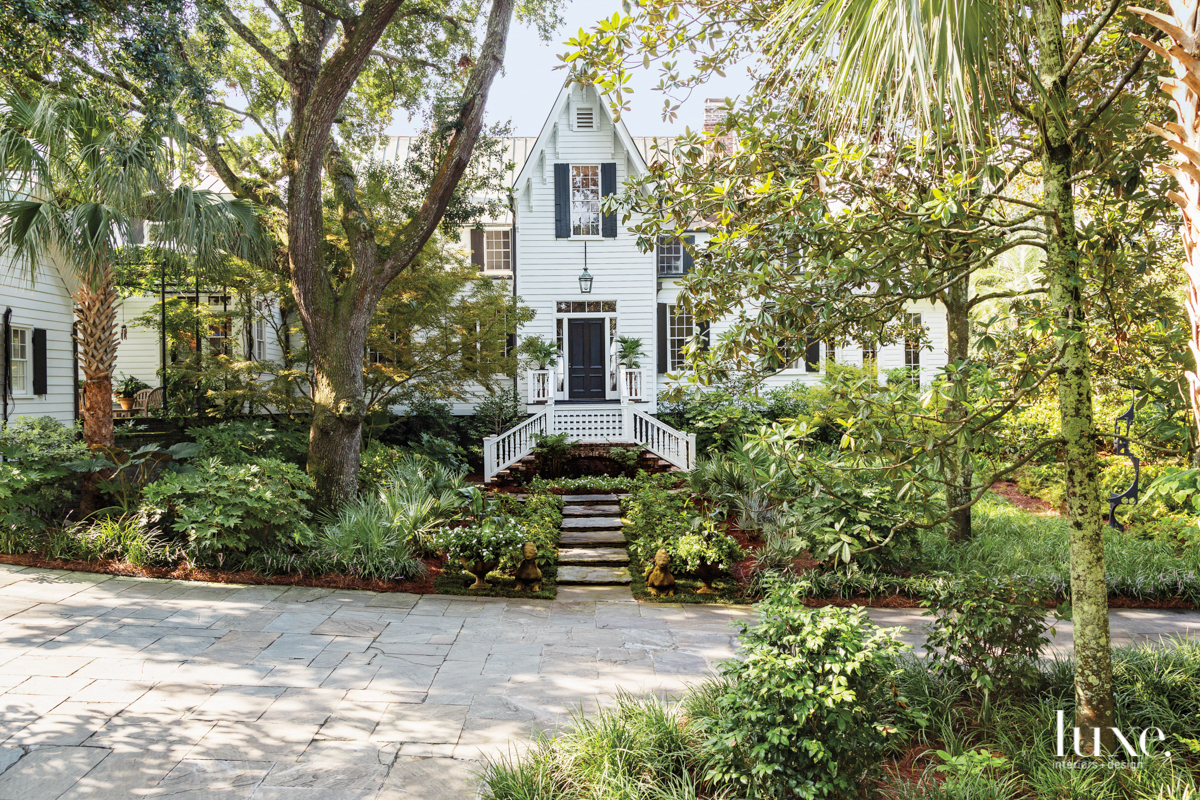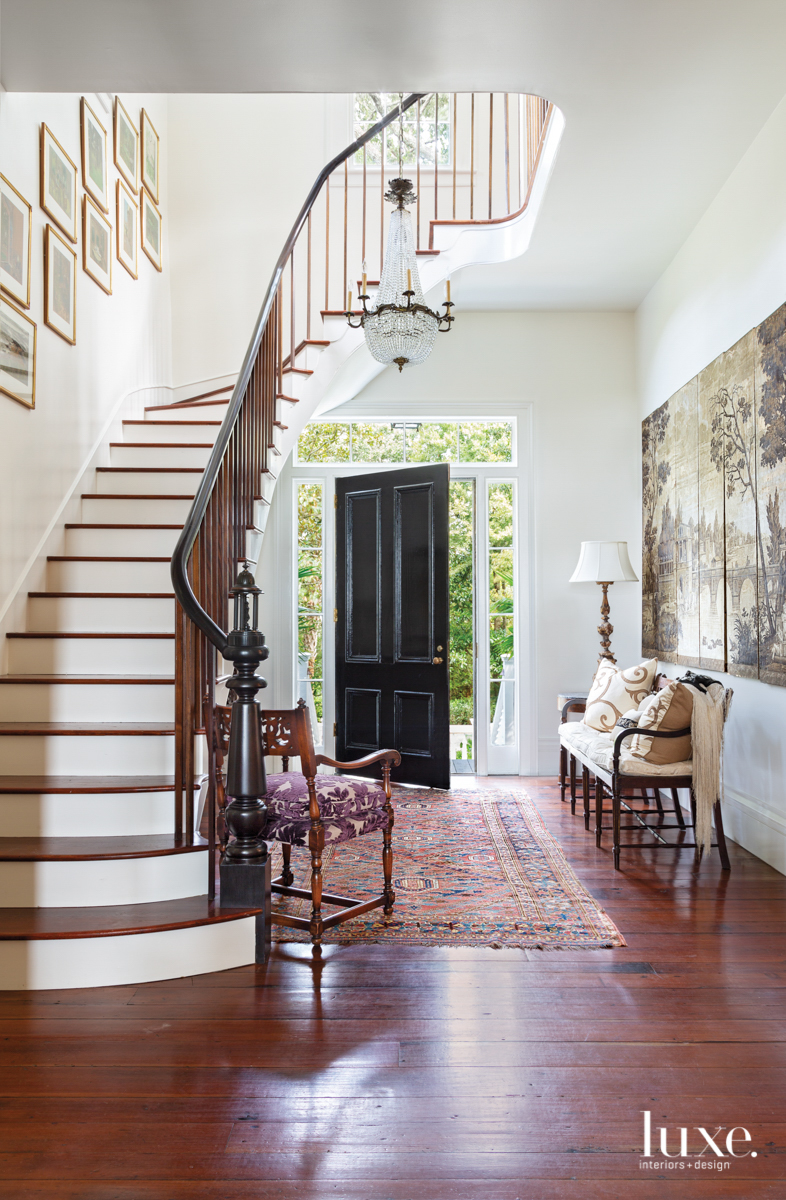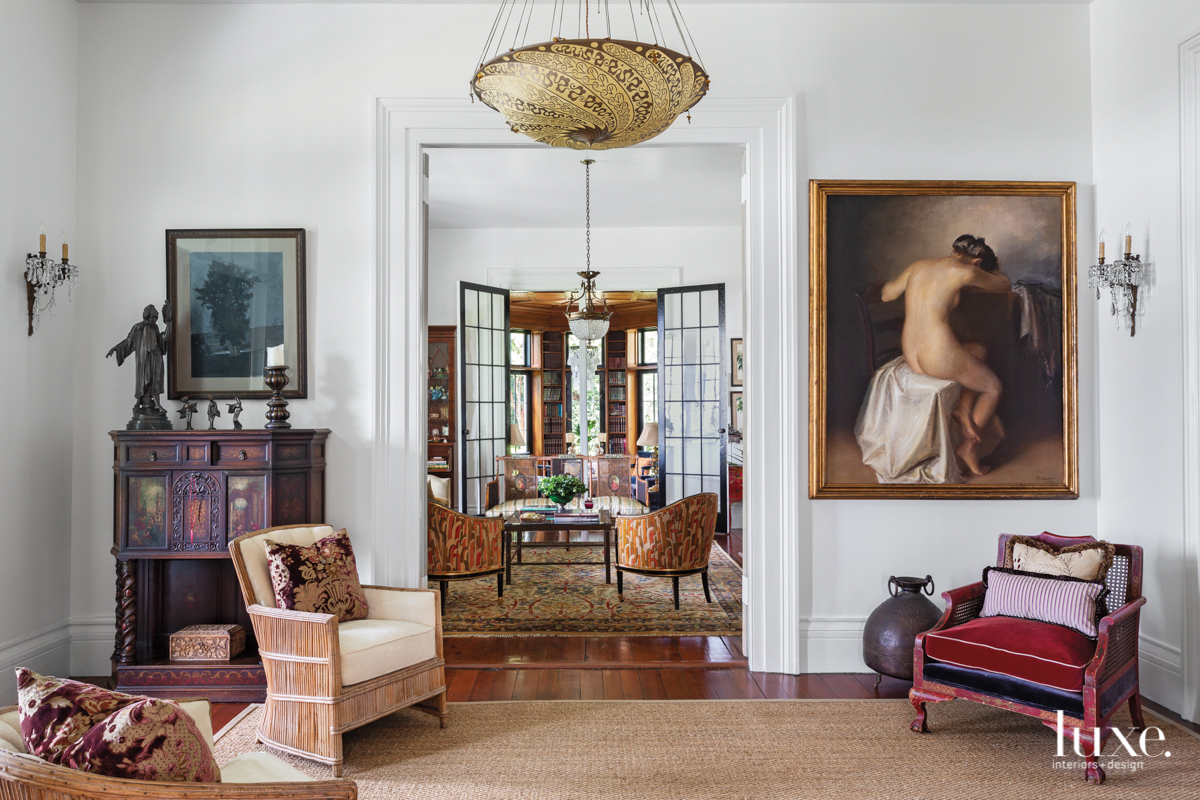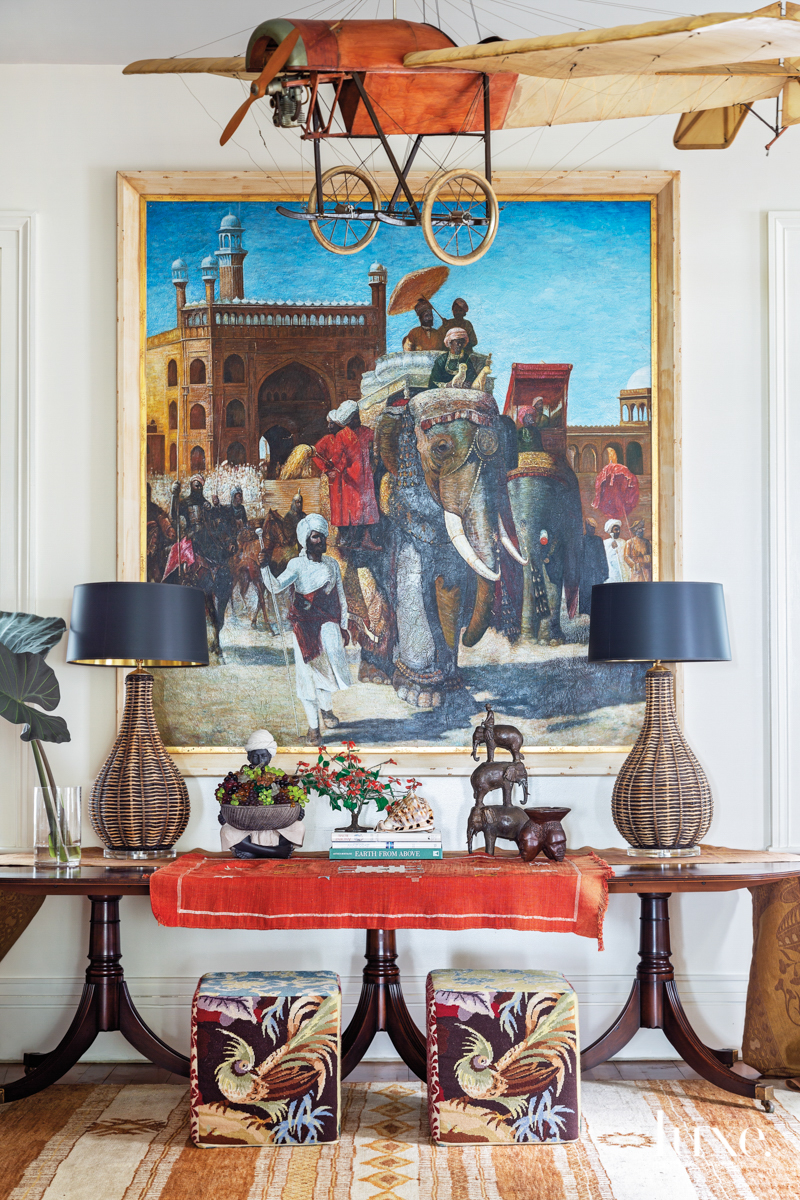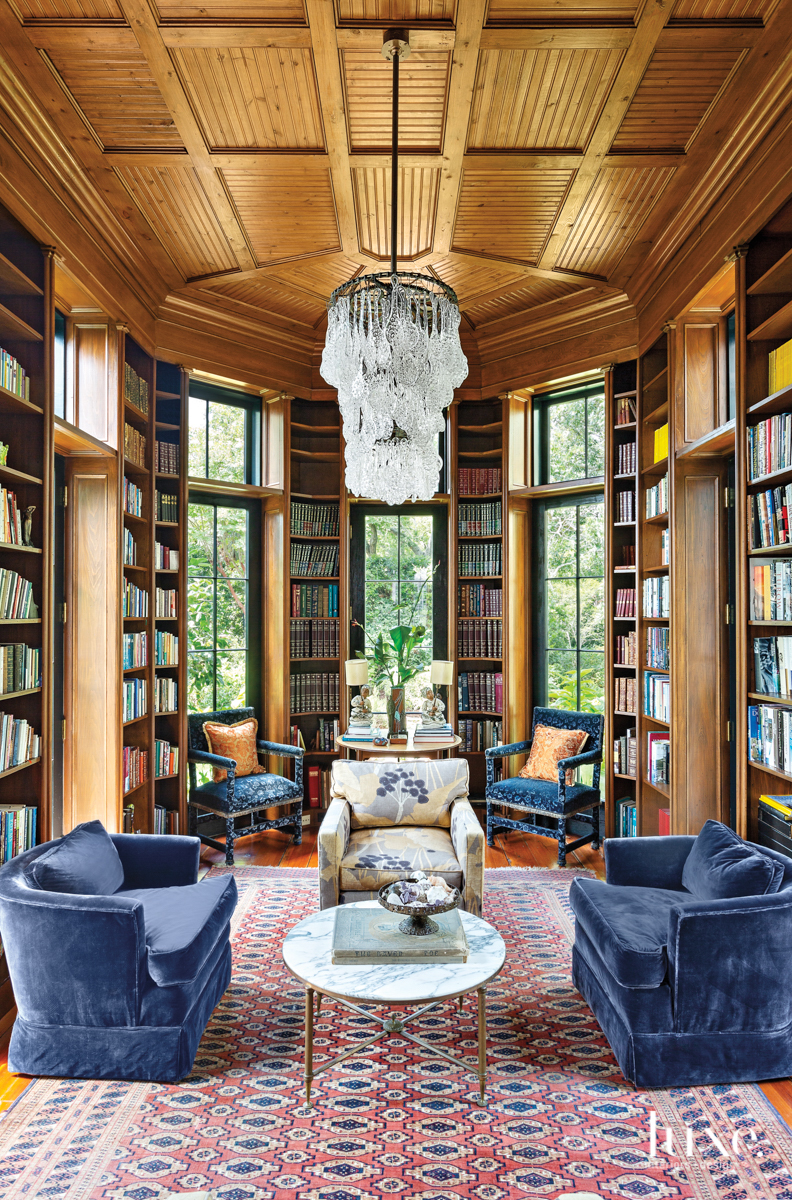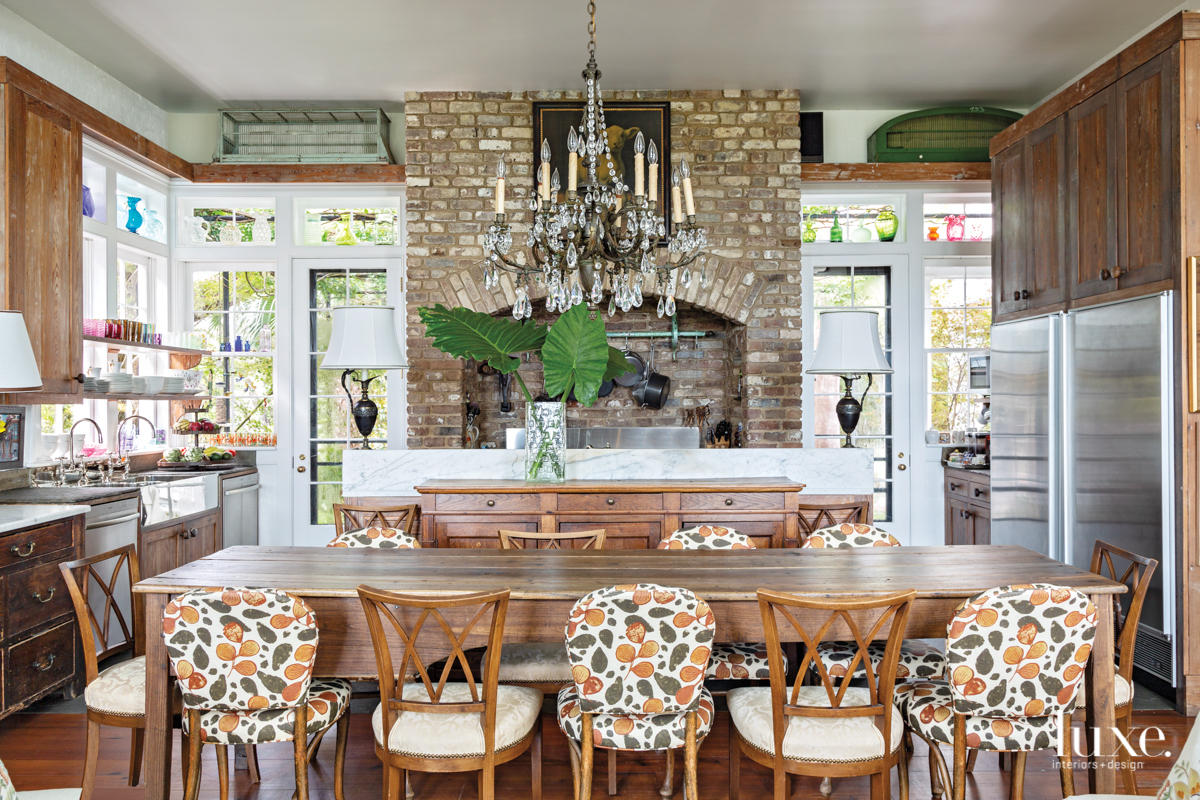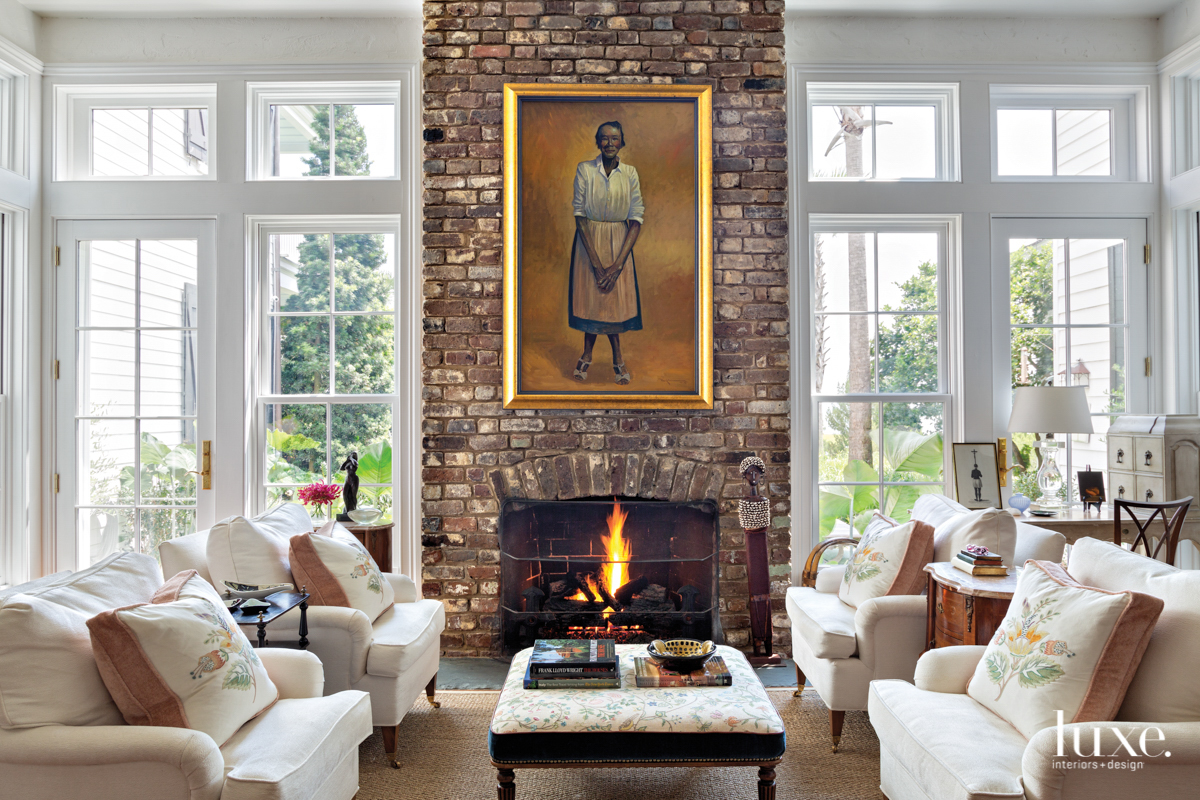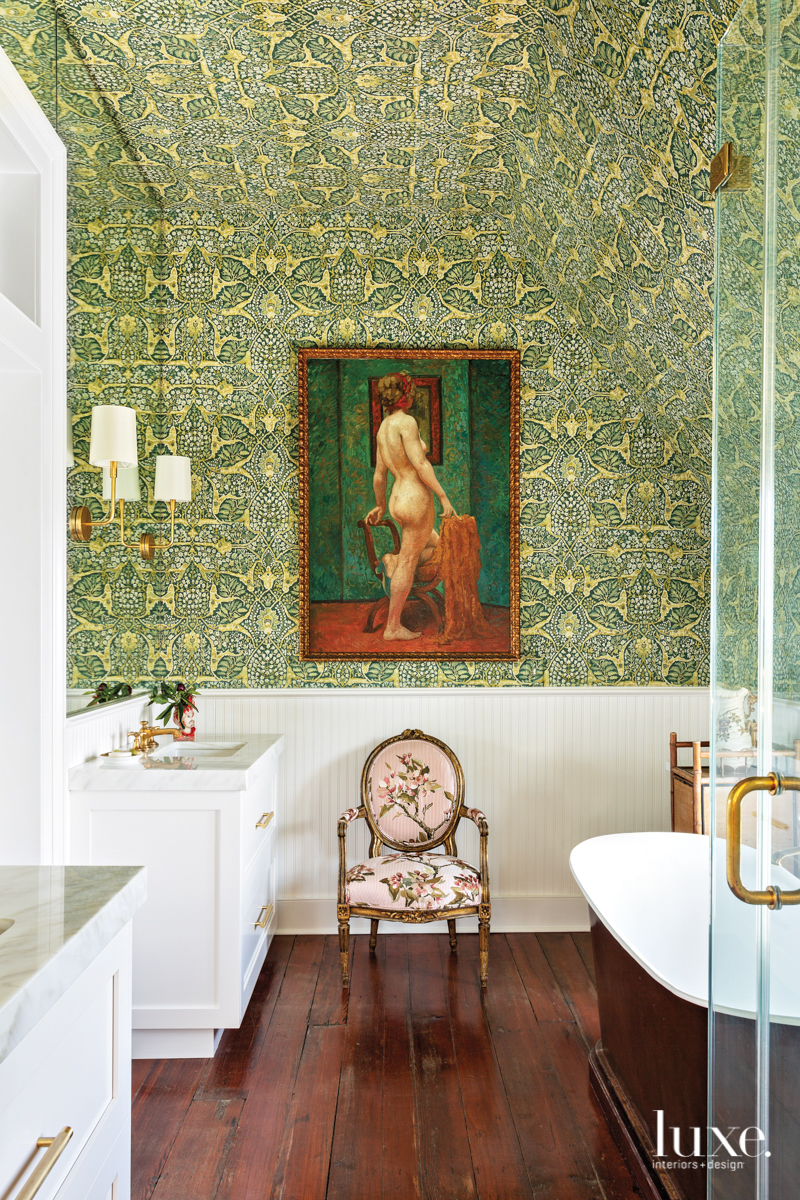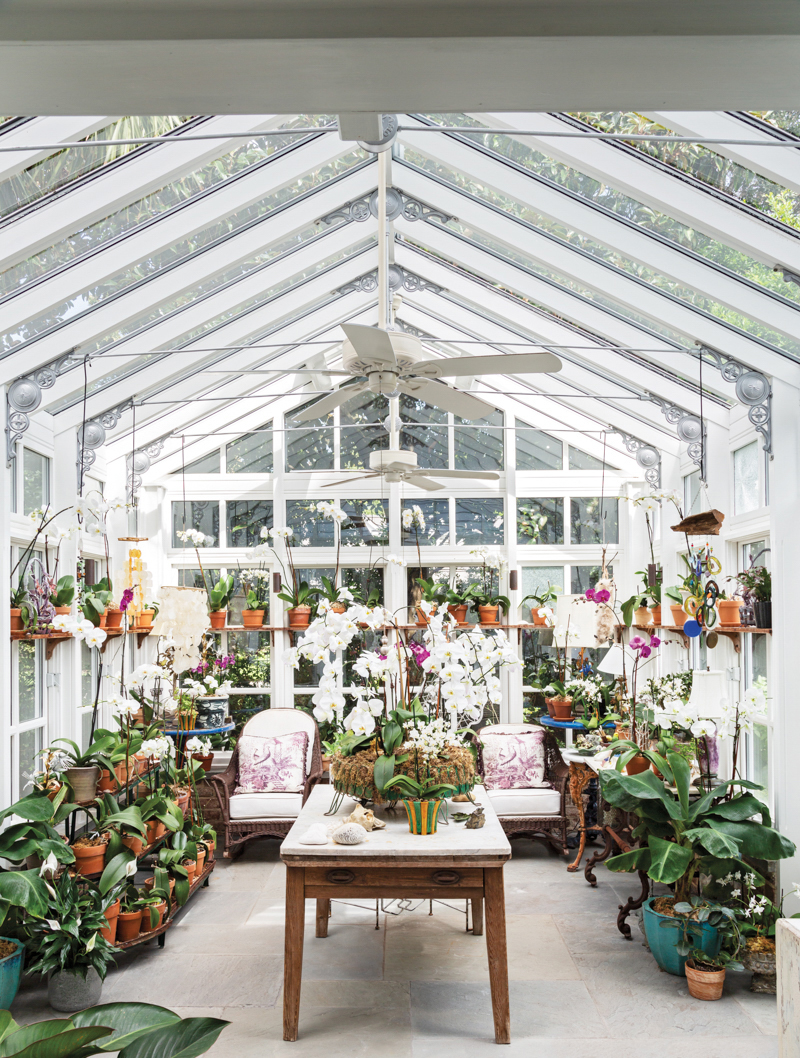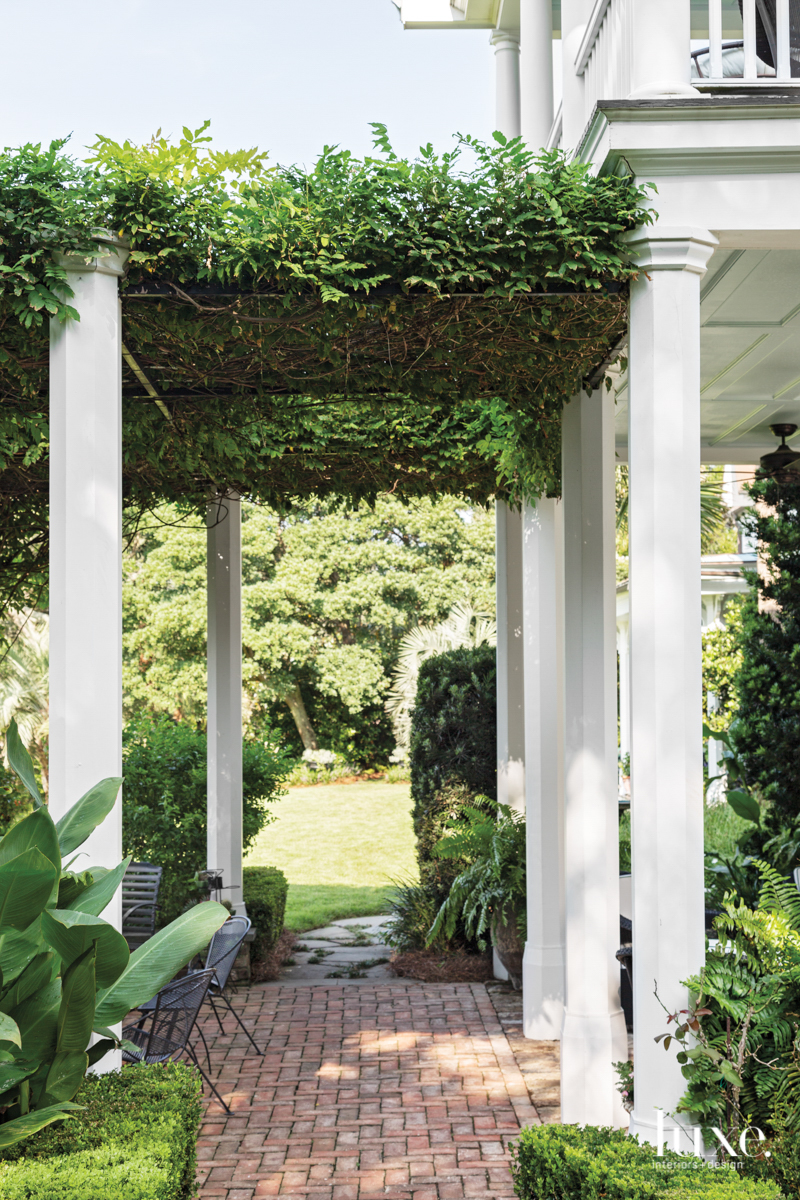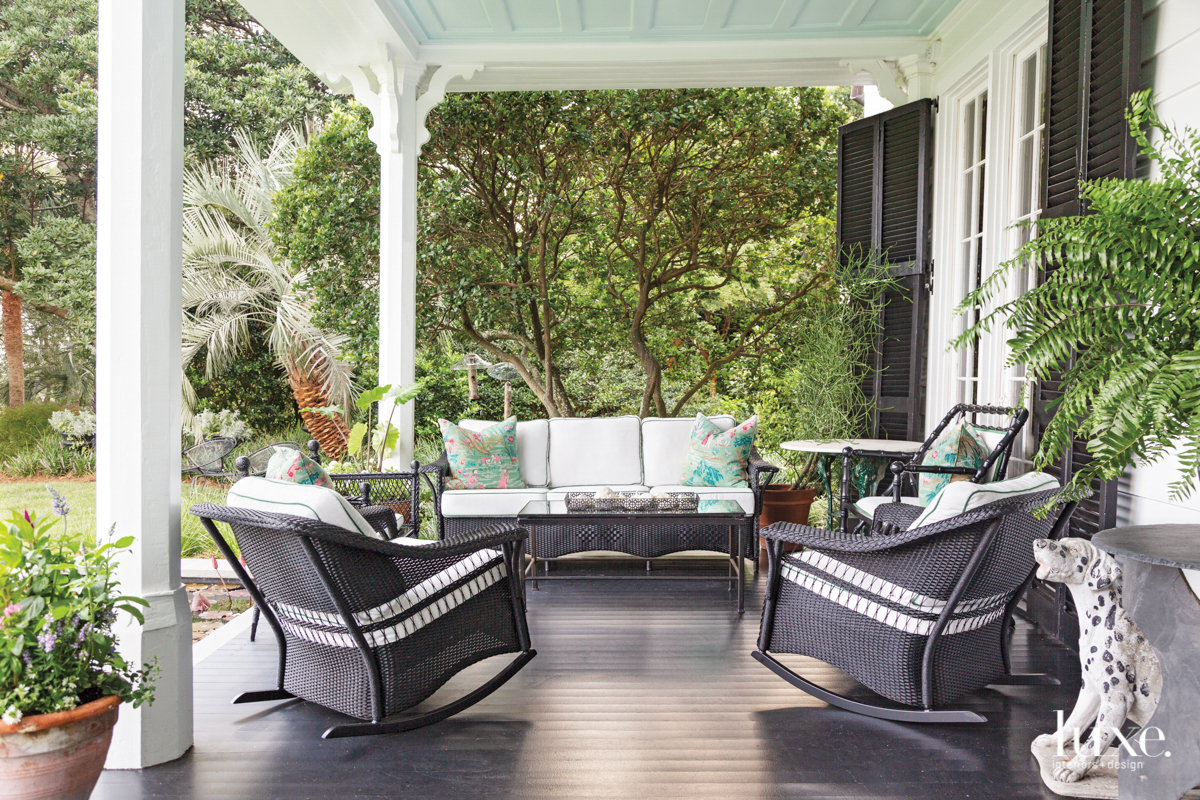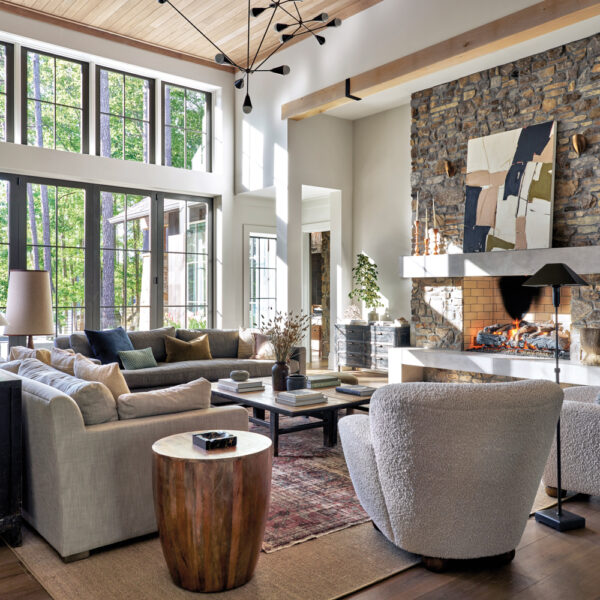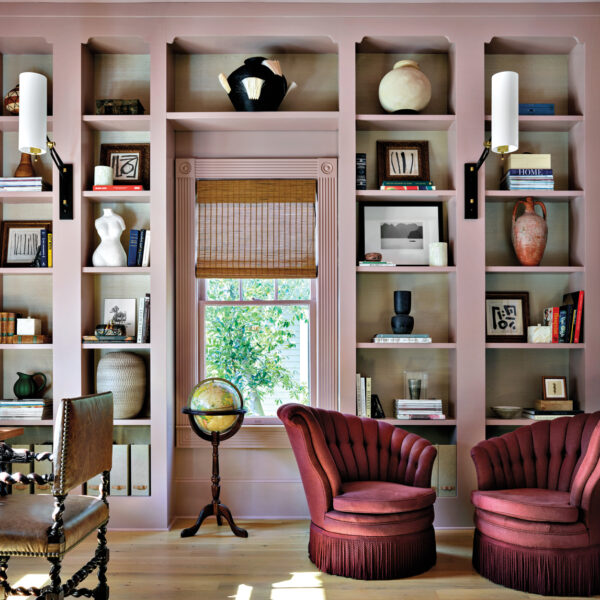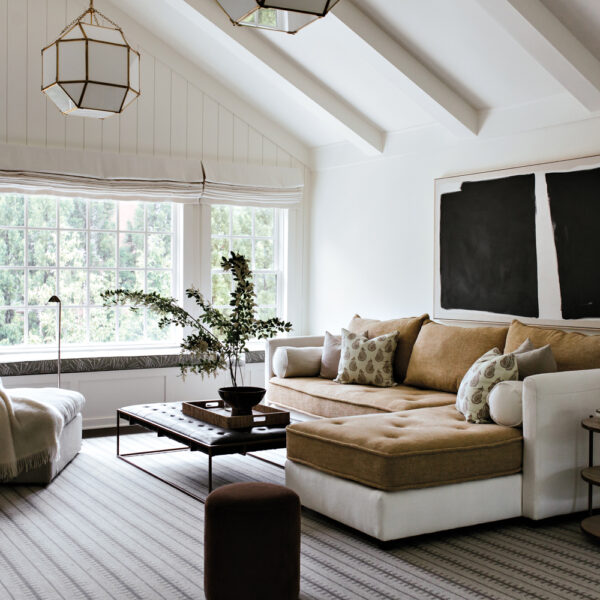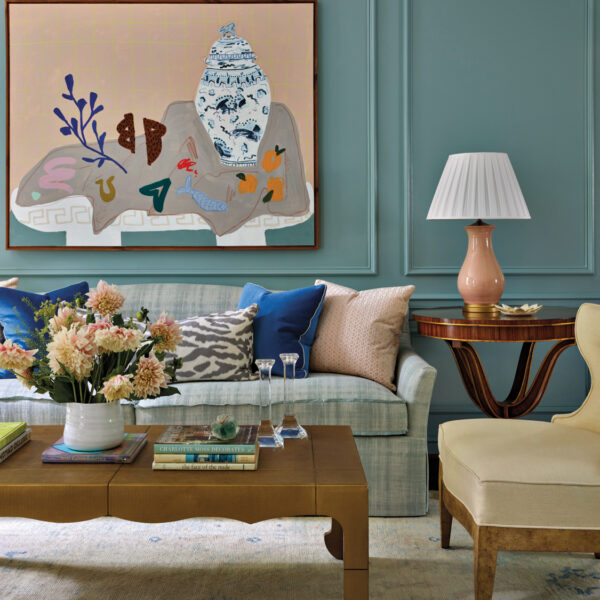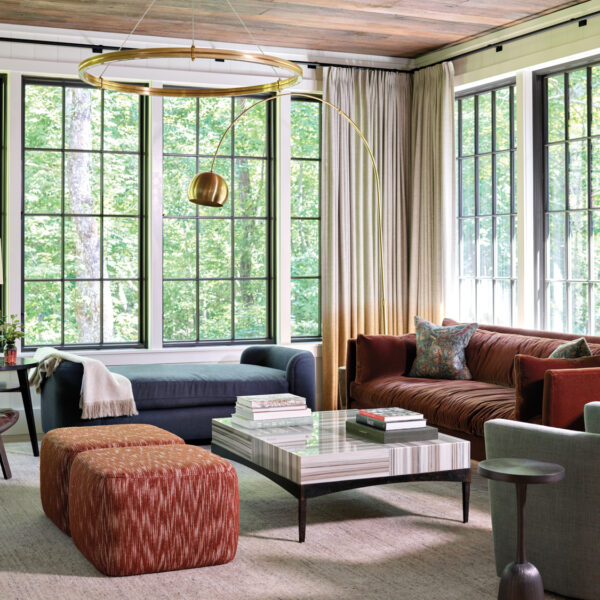Found in the charming Old Village of Mount Pleasant, just over the Cooper River from Charleston, is a historic house that bewitched Elizabeth Stuart well before she even stepped inside. “That day, the magnolias were filled with enormous white blooms, and if you’re a Southerner, that hooks you right there,” recounts the interior designer, who’s also maintained an eponymous home boutique in the area for 23 years.
That was back in the mid-1990s, when Stuart and her growing family were still living in Houston. Feeling a pull to return to her native South Carolina, Stuart had asked an area real estate agent to show her properties. That query led them to a Lowcountry rarity: a Gothic Revival residence nestled amid the thick overgrowth of a former fishing village on Shem Creek. Built in 1850, the home was later used as a makeshift Civil War hospital before becoming tattered by elapsing time.
“We walked into this spooky, falling-apart place and all you could see was history, the shadows of what used to be,” Stuart recalls. In the dining room, for example, a pane of original glass diamond-etched with the year 1876 let her imagination run wild with speculation about the home’s former inhabitants. Despite its run-down condition, Stuart recognized its enviable bones: tall ceilings, original hardwood floors, 12-foot cypress doors. And hidden behind one of them was the intoxicating sight of Charleston Harbor. “As soon as I saw that view, I was just done—I needed to have it,” says Stuart, who convinced her husband to buy the house and relocate the family from Texas to South Carolina.
She then enlisted a close friend, architect Beau Clowney, to help her renovate and expand the forlorn residence. General contractor Richard “Moby” Marks was retained to ensure the home’s details would be restored with the utmost historical accuracy and that the seamless addition—complete with a wood-paneled library and a kitchen niche built from authentic Old Charleston brick—would have hallmarks faithful to the original structure. To shore up the property’s sweeping, 3-acre grounds, Stuart called on landscape architect Sheila Wertimer to distill her vision. Accomplished in phases over 20 years with the aid of additional design collaborators and subcontractors, the compound came together with a trio of koi ponds, a conservatory to house Stuart’s thriving collection of orchids, a wood-shuttered “shade pavilion” and a network of slate paths connecting “hidden garden rooms.”
“To me, gardening is just interior design—but outside,” explains the interior designer, who extended the footprint of the home’s original porch via a brick patio shrouded in an iron trellis. In turn, her efforts established a welcoming space for outdoor dining, entertaining and even a makeshift office. “Porches are very important in the South; it’s where I spend most of my time,” notes Stuart, who recently teamed up with general contractor Bob Fleming to restore it. Previously, the pair had renovated several bedrooms and bathrooms and replaced most windows and doors. “I was careful not to touch any of the original 1850 glass,” Stuart assures.
In the intervening years, Stuart’s interiors have become just as thoughtfully layered. “Any designer will tell you: Our homes are always changing; it’s a curse,” she jokes. Stuart’s evolving tastes—coupled with a lifestyle change (all three children are grown and out of the nest)—meant she could finally indulge certain design whims; namely, her passion for white. Creating a crisp backdrop for an ever-evolving collection of art, Stuart painted nearly every room the same untinged shade, allowing her acquisitions, such as an oil portrait by John Carroll Doyle that now commands the keeping room, to take center stage. Stuart also took the opportunity to refresh her upholstery with luxurious new fabrics—“wonderful thick linens, velvets and mohair, sourced from places like London and Morocco”—a majority of them in shades of, well, white.
Contemporary additions like Eames loungers and Lucite lamps complement more storied finds: a ceramic Dalmatian Stuart acquired in Cortona, Italy, a hand-carved console picked up in Paris and beloved collections of vintage Murano crystal boxes in lavender, garnet and “midcentury green.”
To celebrate her home’s most recent reinvention—and to inspire inevitable future updates—Stuart, who loves to entertain, heeded the wisdom of a family friend. Her advice? “Darling, have a party—have a big, fun party, and in the morning, where your furniture is placed is how it should have been in the first place.” Says Stuart: “She was exactly right. People will pull up chairs where they want to talk. And that’s what makes a home not only beautiful, but comfortable.”

